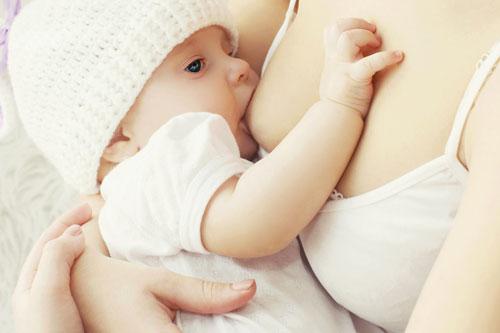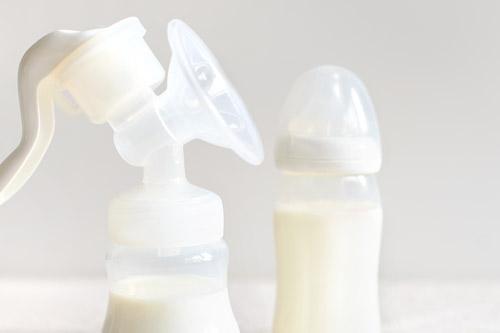Storing and Thawing Breast Milk
To make being away from your baby easier, learn how to store and thaw breast milk—safely.
Español
You may not always be with your baby when they want to eat. This may be when you're returning to work or school, need to run errands, or want a night out with friends. Storing breast milk makes this separation easier, by giving your baby's caregiver breast milk to feed your baby. That way, your baby gets the benefits of breast milk while you are apart.
When you're storing breast milk, you can use it fresh, or you can freeze it for use later. Either way, there are things you should keep in mind to keep the milk safe for your baby. These guidelines change depending on whether you're storing fresh breast milk or thawing frozen breast milk.
Ask your WIC breastfeeding staff what storing options make the most sense for you and your baby.
 Guidelines for Storing Fresh Breast Milk
Guidelines for Storing Fresh Breast Milk
If you are storing fresh breast milk, follow these guidelines for how long the milk can be safely stored. When storing in the refrigerator or freezer, store the milk in the back, where the temperature is most constant.
These guidelines are for healthy, full-term babies.
| Place | Temperature | How Long |
|---|---|---|
| Countertop or table | Room temp. (77°F or colder) | Up to 4 hours |
| Refrigerator | 40°F or colder | Up to 4 days |
| Freezer with separate door | 0°F or colder; | Within 6 months is best, up to 12 months in acceptable |
Guidelines for Storing Fresh Breast Milk
These guidelines are for healthy, full-term babies
 Guidelines for Storing Thawed Milk
Guidelines for Storing Thawed Milk
If you're thawing frozen breast milk, follow these guidelines for how long the milk can be safely used. Remember: Thawed breast milk cannot be re-frozen.
| Place | Temperature | How Long |
|---|---|---|
| Countertop or table | Room temperature (77°F or colder) | 1-2 hours |
| Refrigerator | 40°F or colder | Up to 24 hours |
Guidelines for Storing Thawed Milk
 Tips for Safely Storing and Thawing Breast Milk
Tips for Safely Storing and Thawing Breast Milk
Follow these tips for safely storing and thawing your breast milk.
Storing Breast Milk
- Store your milk in clean glass or BPA-free plastic bottles with tight lids.
- Label the bottle with the date you pumped the milk. If your baby will be with another child care provider, write your baby's name on the label, too.
- Cool the milk as soon as you pump it. When you're out of the house for several hours, such as for work or school, put your milk in an insulated cooler bag with frozen ice packs. Otherwise, put it in the back of the refrigerator or freezer, not in the doors. It will stay colder that way.
- Know that it's normal for breast milk to be different colors, depending on what you ate. It's also normal for the fatty part of the milk to separate. You can gently mix it back in when thawing/warming the milk.
Freezing Breast Milk
- Freeze your milk in small batches of 2-4 ounces, enough for a single feeding. You can freeze smaller portions if your baby is premature, or larger portions if your baby is older.
- Chill fresh milk before adding it to milk that is already frozen.
- Leave about an inch of space at the top of the container. Milk will expand as it freezes.
- Tighten bottle caps or lids only after the milk is completely frozen.
- Store milk in the back of the freezer. Don't keep it in the freezer door.
Thawing and Warming Breast Milk
- Use the oldest milk first. Practice first in, first out (FIFO).
- To thaw frozen milk, hold the frozen bottle or bag under lukewarm running water. You can also thaw it in the refrigerator or in a bowl of warm water.
- Swirl the milk gently to mix. The fatty part of the milk may have separated.
- You do not have to warm milk from the refrigerator. You can feed it to your baby cold or room temperature. If you do warm your milk, test the milk temperature by dropping some on your wrist. It should be comfortably warm, not hot.
- Do NOT microwave your milk. Microwaving breaks down nutrients and creates hot spots, which can burn your baby's mouth.











